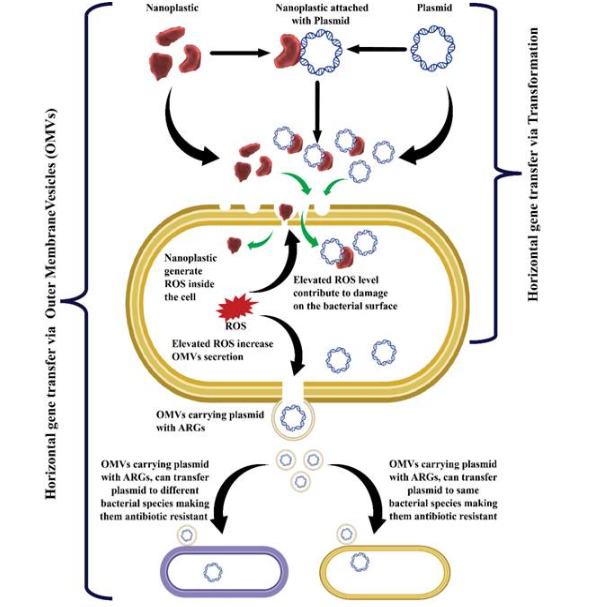7667766266
enquiry@shankarias.in
Recent study shows how discarded PET bottles can exacerbate the global menace of antibiotic resistance.
Antibiotic Resistance (AR) also known as Antimicrobial Resistance (AMR) occurs when bacteria develop defenses against the antibiotics designed to kill them.
Nanoplastics are a type of microplastic, ranging from 1 nanometre (10-9m) to 1 μm (10-6m).
E. coli and Lactobacillus acidophilus are a significant bacteria found in human gut microbiota. Protecting beneficial gut bacteria is crucial for immune support, digestion, and disease prevention.

Reference
The Hindu Business Line| Nano-plastics Contribution to AMR